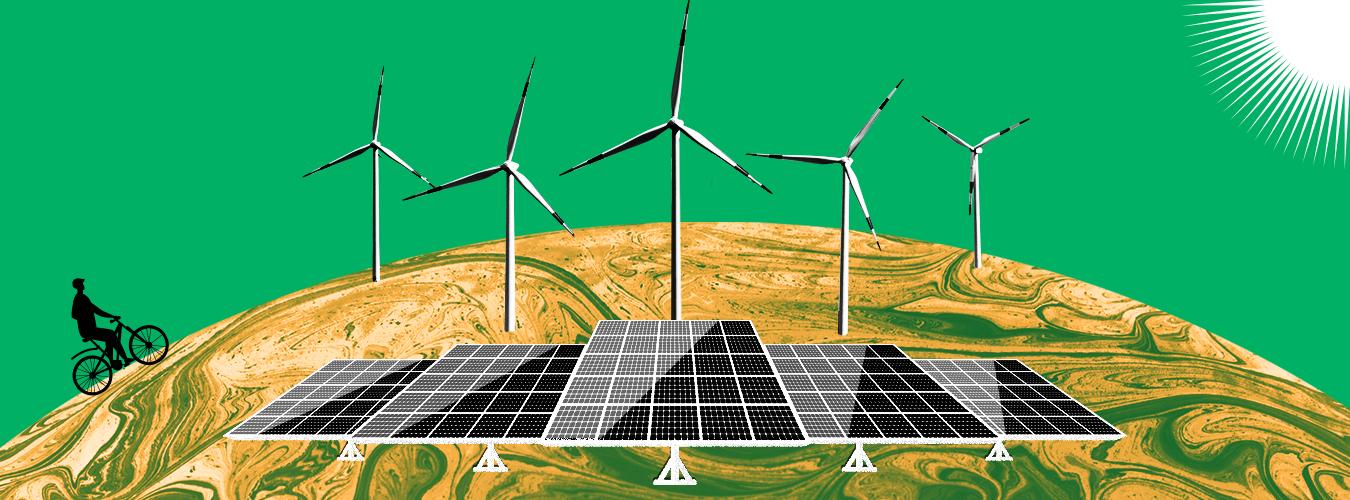Eskom’s Green Shift Gains Momentum
South Africa’s energy landscape is undergoing a critical transformation. Eskom the country’s largest and most influential power utility is redirecting its financial recovery efforts toward sustainability. Following a R20 billion ($1.1 billion) reduction in government debt relief, Eskom now has more fiscal space and credibility to focus on renewable energy investments, modern grid upgrades, and emissions reduction.
This marks a major pivot from survival mode to strategic investment positioning Eskom as a potential leader in Africa’s clean energy future.
Eskom’s Investment Blueprint: Sustainability Meets Stability
Eskom has announced a five-year investment plan worth about R320 billion, aimed at building new renewable capacity, modernizing its grid, and strengthening transmission lines.
The utility’s long-term goal is clear: transition to a majority renewable energy mix by 2040 while phasing down coal dependency. Over 20 gigawatts (GW) of renewable projects primarily solar, wind, and storage are currently in development.
A key part of this plan involves sustainability-linked bonds (SLBs) and green finance mechanisms, which tie Eskom’s borrowing and performance to measurable environmental milestones.
How Sustainability-Linked Bonds Work for Eskom
Unlike standard loans, sustainability-linked bonds (SLBs) are directly connected to Eskom’s environmental and social performance. The utility’s repayment terms, interest rates, and access to new financing depend on meeting specific sustainability targets, such as:
- Lowering carbon emissions per kilowatt-hour produced.
- Expanding renewable energy capacity connected to the grid.
- Improving grid reliability and reducing energy losses.
This structure incentivizes efficiency, transparency, and measurable progress — while also building investor confidence in Eskom’s green transition.
Reliable Power, Cleaner Energy, and Stability
Eskom’s green energy roadmap could create immediate and long-term benefits for South Africa:
- Fewer Outages and More Reliable Power
Grid upgrades and renewable integration will help reduce load-shedding, stabilizing supply for homes and industries. - Cleaner Energy Mix
Replacing coal with solar, wind, and hybrid systems will cut emissions and align South Africa with its Paris Agreement climate goals. - Investor and Public Confidence
Transparent, sustainability-linked financing can help restore Eskom’s credibility and attract new green capital from local and global investors.
Social and Economic Benefits
Eskom’s clean energy push is also an opportunity for economic renewal and social empowerment.
- Job Creation: Renewable energy projects will generate thousands of jobs in construction, maintenance, and energy technology.
- Community Development: Local communities near project sites will benefit from new infrastructure, training, and social programs.
- Industrial Competitiveness: A stable and cleaner power supply will reduce losses for businesses and stimulate economic growth.
This integrated approach ensures that South Africa’s just transition benefits not only the climate but also the people.
Challenges on the Horizon
Despite the promising outlook, Eskom faces multiple hurdles:
- Execution Risks: Turning renewable plans into functioning projects requires robust project management and inter-agency cooperation.
- Municipal Debt: Persistent non-payment by municipalities continues to weigh on Eskom’s financial stability.
- Transparency in Green Finance: Investors expect detailed reporting on how funds are used and whether sustainability targets are met.
How Eskom addresses these issues will determine whether its green plan becomes a success story or another stalled ambition.
Policy and Investor Outlook: A New Era of Green Finance
For policymakers, Eskom’s disciplined restructuring shows how government support can be tied to sustainable outcomes rather than bailouts.
For investors, Eskom represents an evolving opportunity, a test case for how large African utilities can transition responsibly. The company’s sustainability-linked bonds could pave the way for other state-owned enterprises to raise funds tied to environmental goals.
If Eskom proves that green energy can be profitable and stable, it could become a blueprint for green finance in Africa.
Eskom as a Model for Africa’s Energy Transition
Eskom’s $1.1 billion green energy plan symbolizes more than fiscal recovery it represents the future of energy in Africa: clean, transparent, and inclusive.
If executed effectively, this initiative will help South Africa achieve energy security, create jobs, and meet its climate commitments while demonstrating that sustainability and profitability can coexist.
Eskom’s success could inspire similar green transitions across the continent from Kenya’s geothermal expansion to Nigeria’s solar investment programs proving that Africa can lead the global clean energy revolution.
Also read: Huawei Enhances Africa’s Telecoms with Green Energy Solutions
Frequently Asked Questions (FAQs)
- What is Eskom’s $1.1 billion green energy plan?
Eskom’s plan involves redirecting part of its financial relief and investments toward renewable energy generation, grid modernization, and emission reduction. The initiative aims to stabilize electricity supply while accelerating South Africa’s transition to clean energy. - How will Eskom finance these green projects?
Eskom plans to use sustainability-linked bonds (SLBs) and other green finance instruments that tie financial performance to specific environmental goals, such as emissions reduction and renewable expansion. - What benefits will South Africans see from this plan?
The plan promises fewer power outages, cleaner electricity, and more local jobs. It also aims to improve investor confidence in South Africa’s energy sector. - What challenges could Eskom face in achieving this?
Major challenges include project execution delays, financial strain from municipal debt, and ensuring full transparency in how green funds are used. - Why are sustainability-linked bonds important for Eskom?
SLBs hold Eskom accountable for measurable progress. They encourage transparency, attract ESG-focused investors, and link financial performance directly to sustainability outcomes. - How does this plan fit into South Africa’s national climate goals?
The initiative supports South Africa’s Just Energy Transition and Nationally Determined Contributions (NDCs) under the Paris Agreement by cutting emissions and investing in renewable infrastructure. - Will Eskom’s plan influence other African countries?
Yes. Eskom’s approach to green financing and grid modernization could serve as a model for other African utilities, showing how to balance economic recovery with environmental responsibility.



